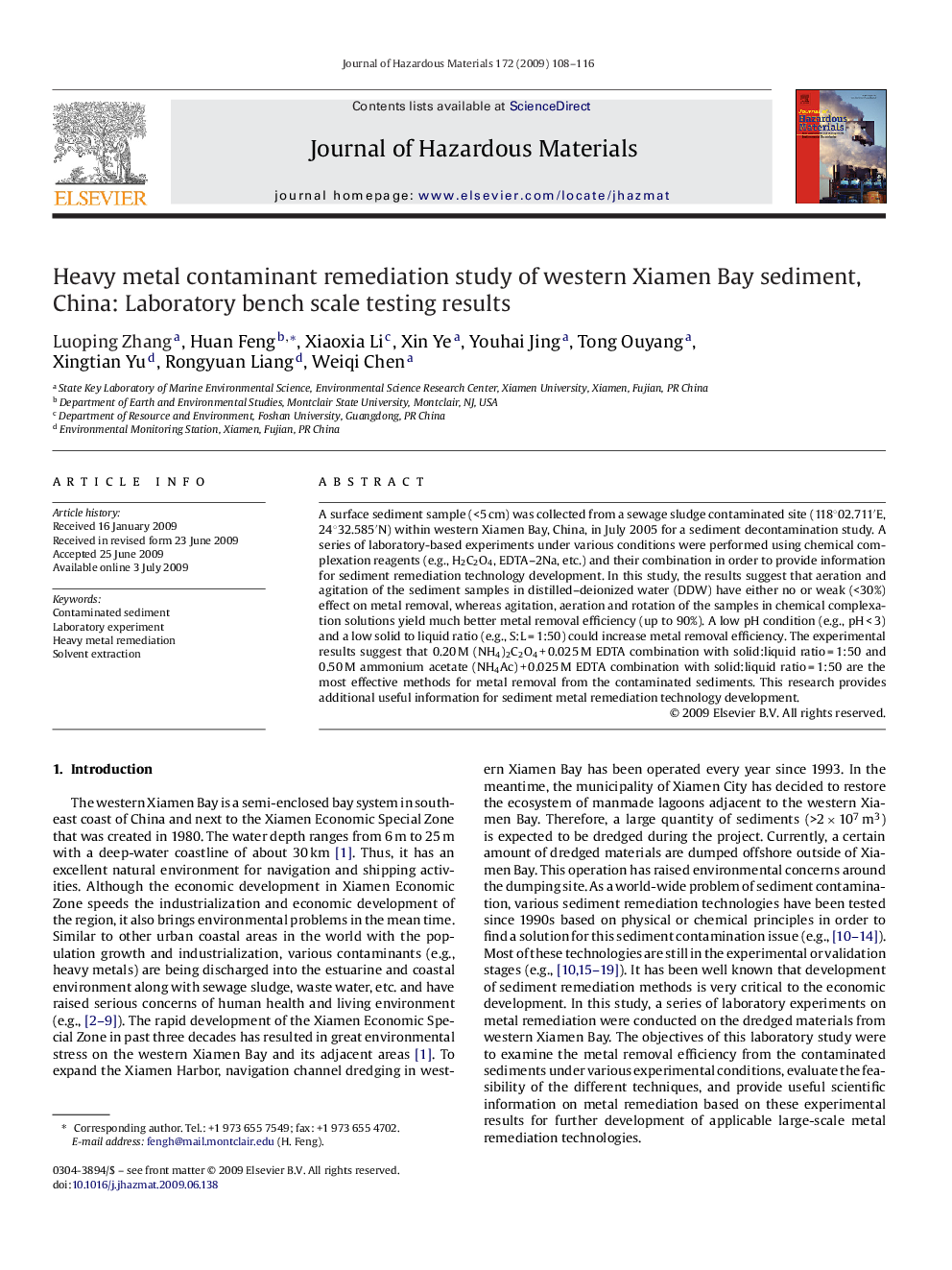| Article ID | Journal | Published Year | Pages | File Type |
|---|---|---|---|---|
| 581040 | Journal of Hazardous Materials | 2009 | 9 Pages |
Abstract
A surface sediment sample (<5 cm) was collected from a sewage sludge contaminated site (118°02.711â²E, 24°32.585â²N) within western Xiamen Bay, China, in July 2005 for a sediment decontamination study. A series of laboratory-based experiments under various conditions were performed using chemical complexation reagents (e.g., H2C2O4, EDTA-2Na, etc.) and their combination in order to provide information for sediment remediation technology development. In this study, the results suggest that aeration and agitation of the sediment samples in distilled-deionized water (DDW) have either no or weak (<30%) effect on metal removal, whereas agitation, aeration and rotation of the samples in chemical complexation solutions yield much better metal removal efficiency (up to 90%). A low pH condition (e.g., pH < 3) and a low solid to liquid ratio (e.g., S:L = 1:50) could increase metal removal efficiency. The experimental results suggest that 0.20 M (NH4)2C2O4 + 0.025 M EDTA combination with solid:liquid ratio = 1:50 and 0.50 M ammonium acetate (NH4Ac) + 0.025 M EDTA combination with solid:liquid ratio = 1:50 are the most effective methods for metal removal from the contaminated sediments. This research provides additional useful information for sediment metal remediation technology development.
Related Topics
Physical Sciences and Engineering
Chemical Engineering
Chemical Health and Safety
Authors
Luoping Zhang, Huan Feng, Xiaoxia Li, Xin Ye, Youhai Jing, Tong Ouyang, Xingtian Yu, Rongyuan Liang, Weiqi Chen,
